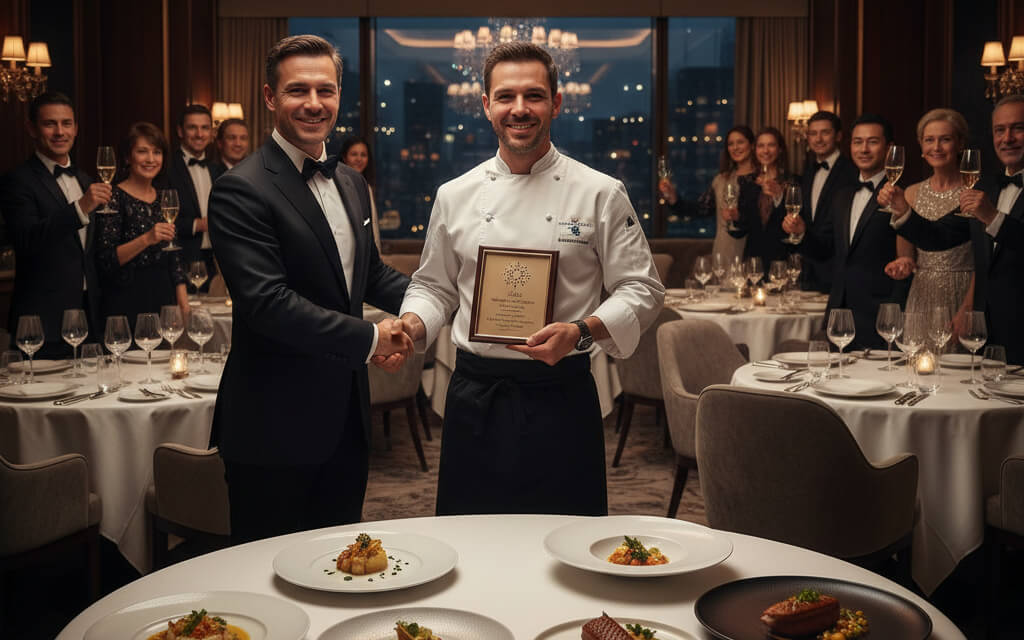October 13, 2025

In an age dominated by online reviews, social media influencers, and food delivery apps, it may seem like the Michelin Guide, a century-old culinary standard, has lost its influence. But as 2025 unfolds, Michelin stars remain one of the most powerful symbols of excellence in the restaurant world. These coveted stars still shape chef reputations, customer expectations, and even the economics of dining, proving that they are more relevant than ever.
Let’s explore why Michelin stars continue to matter — and how restaurants are adapting to stay at the top.
While social media-driven restaurant discovery has risen to prominence, the Michelin star remains the gold standard for culinary prestige. It’s a mark that signals consistency, creativity, and mastery — qualities that discerning diners trust.
Unlike online reviews, which are often subjective and influenced by personal preferences, Michelin’s anonymous, professional inspections are highly respected for their thoroughness and objectivity. For this reason, Michelin stars have remained an essential tool for guiding fine dining decisions.
In fact, many fine dining establishments experience a surge in bookings after earning or retaining their star, demonstrating the enduring power of Michelin’s influence. As explored in The Rise of Contactless Dining, customer trust is a critical factor in today’s dining decisions, and Michelin stars offer an unmatched level of credibility and validation.
The digital revolution has reshaped how restaurants present themselves and interact with customers. Michelin-starred restaurants now recognize the importance of strong digital experiences — from mobile-friendly websites to seamless online booking systems.
As highlighted in Mobile-First Websites: Why Restaurants Can’t Ignore Them, most modern diners discover and engage with restaurants via mobile devices before anything else. This means a Michelin star alone isn’t sufficient in today’s digital-first world; restaurants must also offer a flawless online experience to attract and retain guests.
By aligning Michelin-level service with seamless digital engagement, restaurants set new industry standards that appeal to both traditionalists and modern diners alike.
Earning a Michelin star can boost revenue by up to 30%, but the reality is that maintaining this prestigious recognition requires continuous excellence in every aspect of the restaurant's operations. In 2025, technology plays a central role in helping fine dining establishments manage costs and performance.
For instance, as discussed in The Role of AI in Modern Restaurant Marketing, data-driven insights can help Michelin-starred restaurants optimize everything from menu design to guest experiences. AI tools allow for real-time tracking of reservations, personalized recommendations, and instant feedback analysis, ensuring that the dining experience meets the high standards expected by Michelin inspectors.
Today’s diners are seeking more than just delicious food — they want authenticity, sustainability, and an emotional connection with the places they dine. Michelin has evolved to reflect this shift, recognizing restaurants that are leading the way in eco-conscious dining and innovation.
Michelin’s introduction of the Green Star category celebrates restaurants that integrate sustainability into their operations, demonstrating that luxury and responsibility can coexist. This opens up a new realm of opportunity for small and independent restaurants, who may not have the budget of big names but can outshine larger competitors through smart operational choices.
As outlined in Why Small Restaurants Must Invest in Online Ordering, combining high-end service with operational efficiency enables smaller businesses to compete with the giants, proving that a Michelin star isn’t just for the elite few — it can be within reach for those who innovate thoughtfully.
While a Michelin star undoubtedly brings recognition, the costs associated with maintaining it — including staff training, sourcing premium ingredients, and delivering impeccable service — can be substantial. As such, restaurant owners are increasingly measuring success in a more holistic way, balancing traditional prestige with digital engagement and customer loyalty.
By combining Michelin-star recognition with digital marketing strategies like social media and data analysis, fine dining establishments can achieve long-term value. According to insights from How to Calculate ROI on Restaurant Marketing Campaigns, tracking metrics like repeat customer rates, social media reach, and online reviews can help restaurant owners understand the full impact of their Michelin star beyond just the dining experience.
As we move further into 2025, Michelin stars continue to be a powerful symbol of culinary excellence. They represent a balance between timeless craftsmanship and modern innovation — an important distinction in a world where both quality and digital engagement are vital for success.
While digital marketing and customer data shape modern dining habits, a Michelin star still carries weight. It’s a sign that a restaurant doesn’t just serve food — it defines excellence. For ambitious chefs and restaurateurs, the goal isn’t just to earn a Michelin star — it’s to use it as a foundation for building trust, increasing visibility, and achieving sustainable success in today’s evolving dining landscape.
Stay up to date with the latest tips, expert insights, product reviews, and step-by-step guides to help you grow, create, and succeed—no matter your industry or passion.